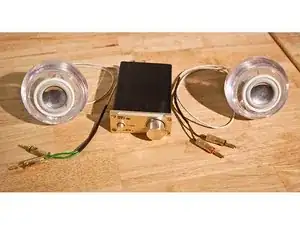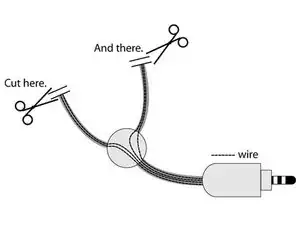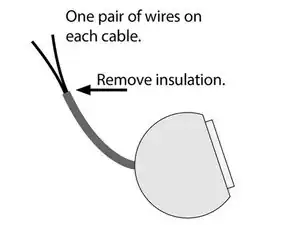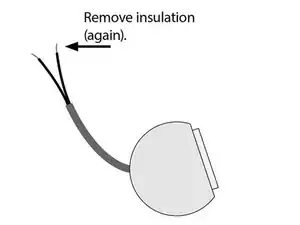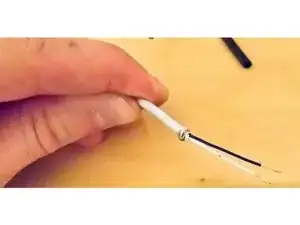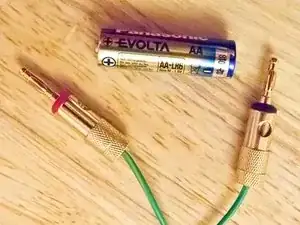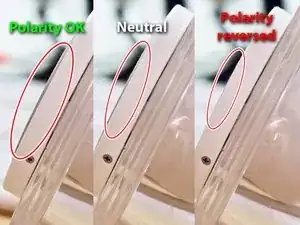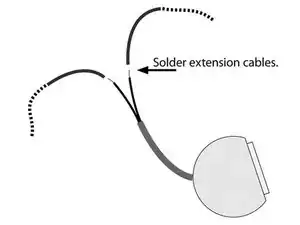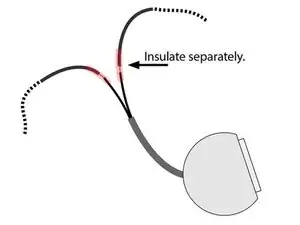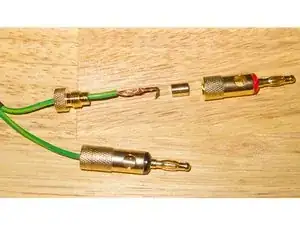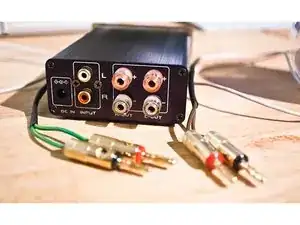Einleitung
Die Apple Pro Speaker lassen sich an aktuellen Macs etc. wegen des vorhandenen Spezialsteckers nicht verwenden. Die alten G4-Macs haben über diesen Spezialstecker ein verstärktes Signal an die Lautsprecher geschickt.
Manche Anleitungen erklären, wie man die Speaker mit einem 3,5 mm Klinkenstecker verwenden kann, aber das ist keine saubere Lösung, da sie Speaker einen Verstärker brauchen.
Eine Lösung mit dem Griffin iFire Adapter kommt aus Kostengründen nicht mehr infrage, weil dieser nur noch gebraucht zu überhöhten Preisen (300,- bis 500,- € bei eBay) erhältlich ist.
Ein Klasse-D-Verstärker kostet aktuell ca. 35,- €. Solche Modelle lassen sich wahlweise per Kabel oder per Bluetooth 5.0 ansteuern.
Werkzeuge
Ersatzteile
-
-
Dieses Bild zeigt das fertige Setup. Mit ein bisschen Arbeit kannst du bald den klaren Sound der true harman kardon Lautsprecher genießen.
-
Bitte beachte: In diesem Guide werden die original Kabel/Anschlüsse, mit denen die Apple Pro Speakers an einen iMac, Power Mac oder den Griffin iFire angeschlossen werden, zerstört.
-
Bitte beachte auch, dass du – wie bei jeder elektronischen Reparatur- oder Änderungsanleitung – allein für deine eigene Gesundheit und die Gesundheit anderer verantwortlich bist. Beachte auch, dass du allein für beschädigte elektronische Geräte verantwortlich bist.
-
-
-
Schneide beide Lautsprecherkabel ab. Für die maximale Länge der Kabel, schneide sie nahe des weißen "Knopfes", der die Kabel zusammenführt.
-
-
-
Entferne etwa 5 Zentimeter der Isolierung bei beiden Kabeln mit einer Schere oder einem passenden Werkzeug. Sei vorsichtig und beschädige die Kabel selbst nicht.
-
In jedem Kabel sind zwei Leitungen.
-
-
-
Jetzt entferne die Isolierungen der inneren Leitungen. Achte wieder darauf, die Drähte nicht zu zerschneiden, sie sind sehr dünn.
-
-
-
Jetzt müssen wir die Polarität der Lautsprecher rausfinden, also, welches Kabel + und - ist.
-
Leider habe ich damals nicht die Kabel fotografiert, aber hier ist ein einfacher Trick, um das herauszufinden.
-
Hier sind zwei Bananenstecker und eine AA Batterie. Stell dir vor, die Kabel führen zu einem Lautsprecher.
-
-
-
Verbinde nun die beiden Anschlüsse eines Lautsprechers mit den Polen einer AA Batterie (es kann auch eine AAA Batterie sein).
-
Wenn sich die Lautsprechermembran nach außen wölbt (linkes Bild), handelt es sich um die richtige Polarität. Der am Pluspol der Batterie anliegende Draht kennzeichnet '+' für den Lautsprecheranschluss am Verstärker.
-
Sollte sich beim Anschluss an die Batterie die Lautsprechermembran nach innen wölben (wie im rechten Bild), ist die Polarität vertauscht. In diesem Fall markiert der am Minuspol der Batterie anliegende Draht '+' für den Lautsprecheranschluss am Verstärker.
-
Anmerkung: Vermutlich kennzeichen bei allen Pro-Speakern der gelbe und der weiße Draht jeweils '+'.
-
-
-
Jetzt löte eine Verlängerung an die beiden Kabel. Wenn du willst nutze rot für + und schwarz für -, das macht es dir später leichter.
-
-
-
Nun müssen wir die Löstellen noch sauber abisolieren. Nutze dafür Schrumpfschläuche oder Isolierband.
-
Du kannst auch noch einen großen Schrumpfschlauch über beide Leitungen ziehen, damit du später wieder ein Kabel pro Lautsprecher hast.
-
-
-
Die Kabelenden werden abisoliert. Sie können noch mit Lötzinn gesichert werden. Die Drahtenden werden am Verstärker eingeklemmt.
-
Wahlweise können aber auch Bananenstecker mit den Drahtenden verbunden werden, so dass die Lautsprecherkabel eingesteckt werden.
-
-
-
Du bist fast fertig. Verbinde die Lautsprecherkabel mit deinem Verstärker. Verbinde deinen Computer oder ein anderes Abspielgerät mit dem Verstärker und genieße deine alten neuen Apple Pro Speaker.
-
Beachte bitte, dass die Apple Pro Speaker schon immer nicht sehr laut waren. Das soll so. Aber dank des Verstärkers haben sie einen klaren und sauberen Klang.
-
48 Kommentare
Amp shown appears to be a Muse Audio M20 EX2 TA2020
dick -
Good guide. I'm doing the same thing with a pair of these speakers, but I think I'll use new cables soldered to the speaker terminals.
One quibble though. I believe the correct term for the wire covering is "insulation", not isolation, and in step 9, you "insulate" the wires, rather than isolate.
Chuck -
Thanks chuck, I have corrected the wire covering term :)
rafael -
